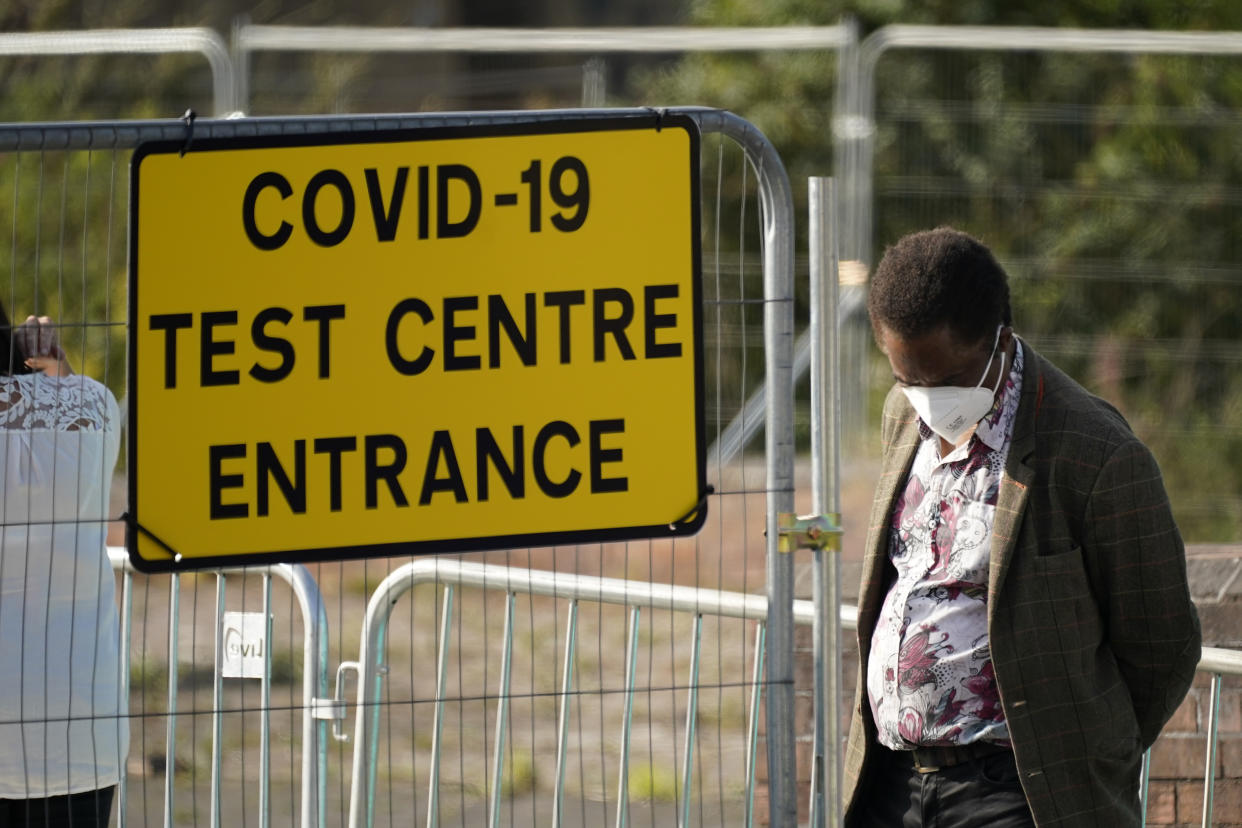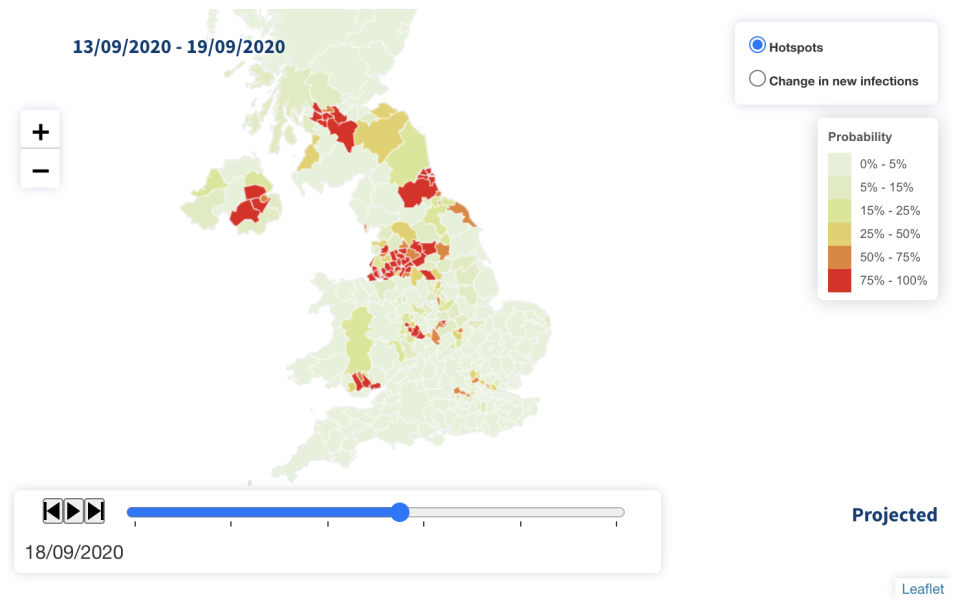The 49 places in England where COVID is spreading fastest are all in the north

New data shows massive imbalance between COVID-19 prevalence in north of England compared to south
Top 49 areas with highest infection rates are all in north
Expert says one reason may be prioritisation of testing in north... leading to risk of infections not being picked up in south
New data has shown the 49 places where the coronavirus is spreading fastest are all in the north of England.
A list showing the latest infection rates by council area (see the top 50 at the bottom of this page) demonstrates a clear north/south divide.
The first time a southern area appears on the list is Redbridge at number 50, which had 41.0 new cases per 100,000 people in the seven days up to Tuesday (15 September).
All the 49 areas above Redbridge are in the north. The list is topped by Bolton, which had an infection rate of 189.9 per 100,000.
Watch: Can the coronavirus affect the brain?
It follows on from the government’s policy of imposing local lockdowns and restrictions on specific areas – with the south of England so far unaffected.
Parts of the north-west, west Yorkshire and the Midlands were the latest to be given tough measures on Friday, with restrictions announced for the north-east on Thursday.
The stark contrast is further demonstrated by a map, below, produced by Imperial College London.
Researchers have modelled where in the country the virus is likely to be increasing, with the darker shades showing a greater probability, and the lighter shades showing a lower probability.

As the map shows, there are no “red areas” – those with a 75% to 100% chance of infections increasing – in the entire south of England for Friday.
All red areas are in the north, while the south is mainly made of “light green” areas, where the probability of infections increasing is just 0% to 5%.
So, why is the coronavirus hitting the north so badly while the south remains largely unaffected?
Dr Duncan Robertson, a lecturer in management sciences at Loughborough University who has been analysing the coronavirus testing regime through the pandemic, thinks the reason is possibly nuanced.
Speaking to Yahoo News UK, he suggested it could be that the government’s limited testing capacity is being focused on northern areas which have suffered higher infection rates since the summer – meaning infections in the south may not be picked up.
Test and Trace chief Dido Harding admitted on Thursday that up to 75% of people who want a test are unable to get one, with the government currently struggling with high demand.
“What could be happening is prioritisation of testing in the areas where they know is the highest incidence,” Dr Robertson said.
“The problem with that is if you’re taking testing capacity away from areas where you think there isn’t high incidence, there is a risk you’re not picking up new infections.
Read more: Top government adviser blames 'bad policy' for spike in COVID infections
“The prime minister described this as a ‘whack-a-mole’ strategy, but if you don’t know where the moles are, you can’t whack them.”
Baroness Harding told MPs the government’s latest testing capacity is 242,817 a day. Boris Johnson has promised this will more than double to 500,000 by the end of October.
Dr Robertson added: “It’s essential we have a fully functioning testing system. At the moment there is obviously capacity restrictions with NHS Test and Trace. It’s essential that is resolved so we get an accurate picture of incidence across the country.”
Here are the 50 areas with the highest coronavirus infection rates in England in the seven days up to 15 September
Bolton 189.9 cases per 100,000 people
Hyndburn 144.4
Preston 139.0
Rossendale 131.5
South Tyneside 121.9
Liverpool 119.3
Knowsley 117.3
Oldham 113.4
Burnley 109.1
Bury 105.2
Oadby and Wigston
Blackburn with Darwen 102.9
Salford 100.5
St. Helens 99.7
Halton 98.9
Wirral 97.8
Bradford 96.7
Warrington 94.8
Tameside 90.5
Rochdale 89.9
Manchester 89.5
Pendle 89.0
Leicester 85.8
Gateshead 83.6
Birmingham 77.3
Leeds 76.9
Sunderland 70.9
Newcastle upon Tyne 70.7
Blaby 69.9
Kirklees 69.4
Solihull 69.3
Sefton 61.5
Wigan 59.6
Rugby 56.9
Sandwell 55.4
Wyre 54.4
Selby 53.0
Barrow-in-Furness 49.2
Stockport 48.4
Blackpool 48.0
Wolverhampton 47.8
North Tyneside 47.6
South Ribble 46.0
Trafford 45.9
Calderdale 45.4
Chorley 44.0
Hartlepool 42.7
West Lancashire 42.0
Charnwood 41.4
Redbridge 41.0
Coronavirus: what happened today
Click here to sign up to the latest news and information with our daily Catch-up newsletter

 Yahoo News
Yahoo News 

